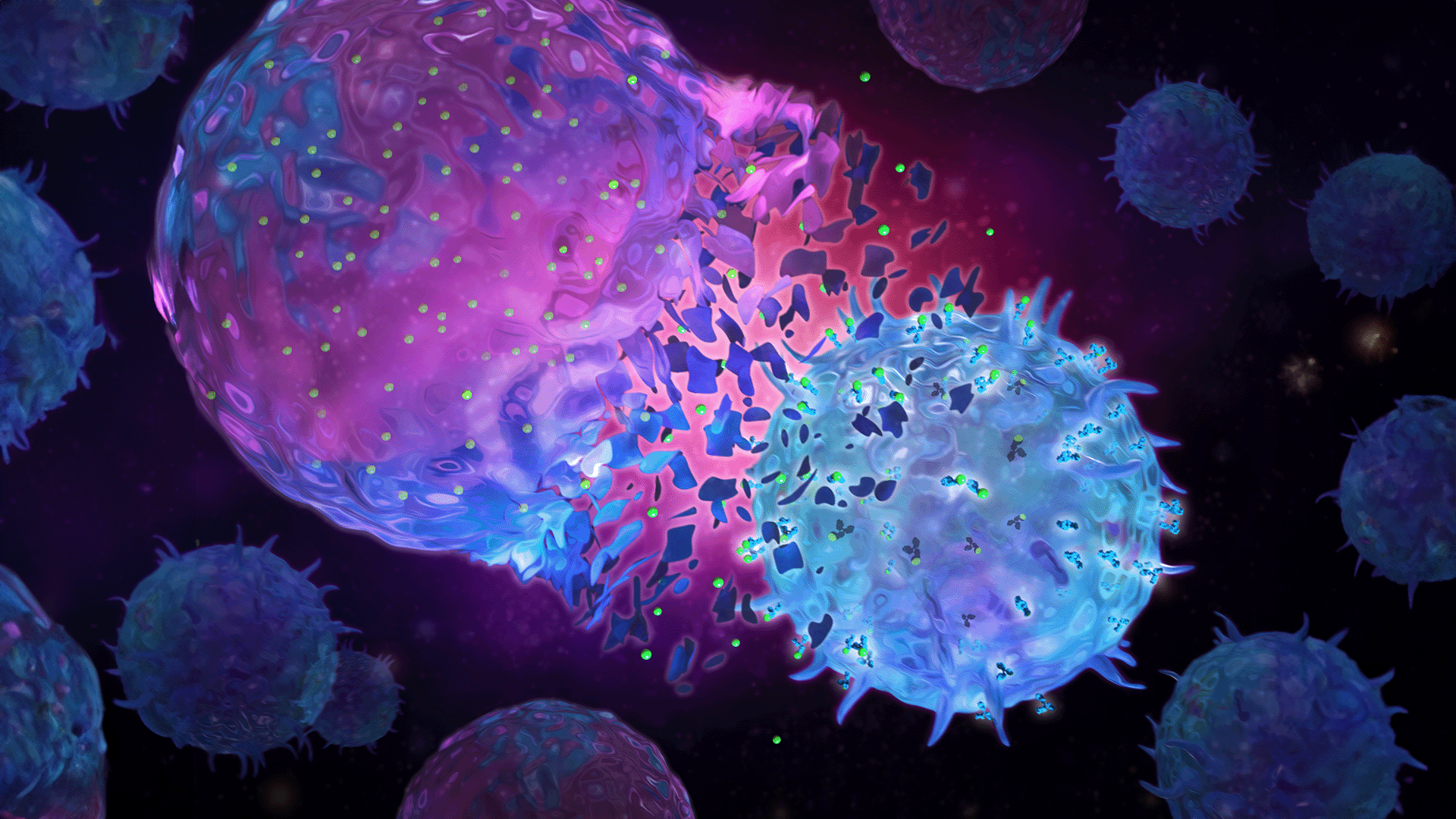
A new method for understanding the behaviour of immune cells, using a coloured dye to identify and sort which cells are most effective at combatting infections, could open up possibilities for creating advanced immunotherapy treatments for various diseases.
The researchers behind the discovery, led by Assistant Professor Cheow Lih Feng (Biomedical Engineering), say it marks a major step forward in the analysis of a crucial immune system mechanism.
The method - called PAINTKiller - uses a non-toxic, coloured dye to identify and sort the most effective killer immune cells, shedding new light on the functions of the human body’s defences and a process known as cell-mediated cytotoxicity that tackles disease-causing foreign cells.
The research was first published in Nature Biomedical Engineering.
“The novel methodology proposed by my team is highly selective in identifying the killer cells capable of efficiently eliminating a target cell,” said Asst Prof Cheow.
“This stands in contrast to other characterisation techniques, which are labour-intensive, time-consuming and less selective.”
Asst Prof Cheow, who is also attached to the NUS Institute for Health Innovation & Technology (iHealthTech), developed the PAINTKiller method together with his team members Dr Luah Yen Hoon and Dr Wu Tongjin.
PAINTKiller (which stands for ‘proximity affinity intracellular transfer identification of killer cells’) employs a fluorescent, non-toxic dye known as CFSE, which is commonly used in cell biology and immunology to label and track cells.
In the method developed by the PAINTKiller team, the dye is used to ‘paint’ the surface of killer cells, visually identifying them as the cells responsible for destroying foreign cells.

Painting the most effective killers
During a typical immune response, some immune cells – referred to as killer cells – destroy foreign cells by releasing proteins causing the targeted cells to rupture and spill their contents - a process known as cell lysis.
For their method to work, researchers first stained the foreign cells with the CFSE dye. They then modified the surface of immune cells giving them a receptor which captures the dye when it is released by the ruptured foreign cells.
This release ‘paints’ the killer immune cells with the dye, allowing scientists to visually pick them out - effectively highlighting the most effective killer cells.
In their study, the research team were able to sort and extract the killer cells painted with the CFSE dye and then grow them separately.
Subsequently, through a series of experiments, they were able to demonstrate that these painted immune cells had better infection-killing performance and even remained potent after 12 days.
The PAINTKiller team say that their approach opens up new possibilities for creating more effective cell-based immunotherapy treatments.
Taking the method a stage further, the team have also been applying the same techniques to understand more about the behaviour of killer cells and the proteins they release during the fight against diseases.
“The versatility of PAINTKiller holds significant promise for enhancing cell-based immunotherapy and advancing cell-manufacturing workflows,” said Dr Wu. “This innovative approach would provide a useful tool to comprehensively elevate the quality and functionality of the ultimate therapeutic product, marking a notable advancement in the field.”
Moving forward, the team plans further studies to expand the versatility of the PAINTKiller method, applying it to a broad spectrum of combinations of cells to build a better picture of how our immune system reacts in different situations.
“Our aim is to see the PAINTKiller method become a key tool for both research and medical treatments,” said Asst Prof Cheow. “We hope this could be the beginning of a new journey, exploring innovative ways to understand and enhance our body's defence system."





